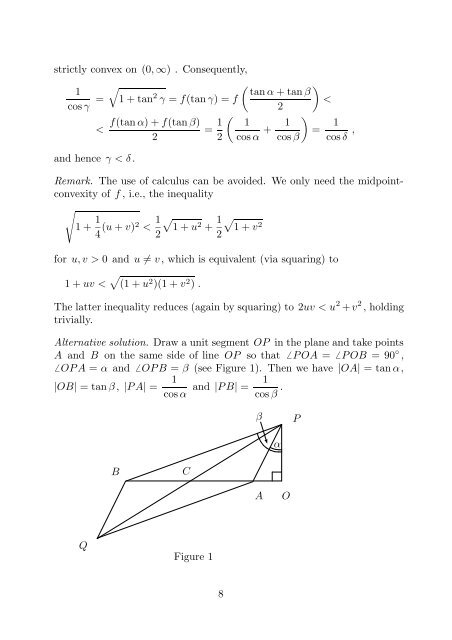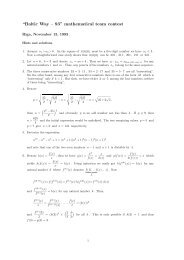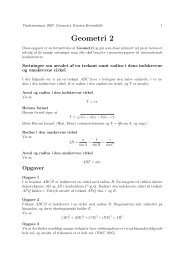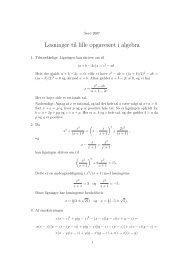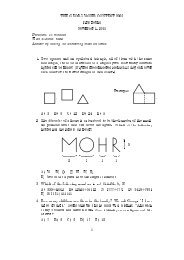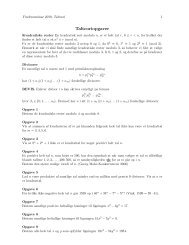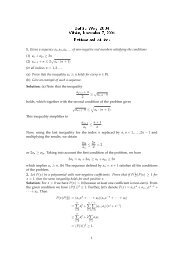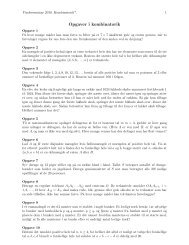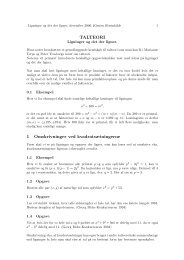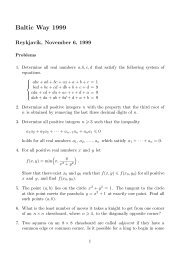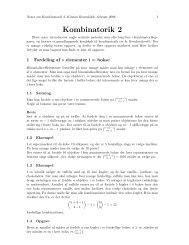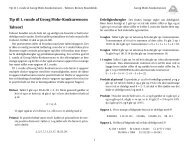You also want an ePaper? Increase the reach of your titles
YUMPU automatically turns print PDFs into web optimized ePapers that Google loves.
strictly convex on (0, ∞) . Consequently,<br />
1<br />
cos γ =<br />
�<br />
1 + tan2 � �<br />
tan α + tan β<br />
γ = f(tan γ) = f<br />
<<br />
2<br />
< f(tan α) + f(tan β)<br />
=<br />
2<br />
1<br />
� �<br />
1 1<br />
+ =<br />
2 cos α cos β<br />
1<br />
cos δ ,<br />
and hence γ < δ .<br />
Remark. The use of calculus can be avoided. We only need the midpointconvexity<br />
of f , i.e., the inequality<br />
�<br />
1 + 1<br />
4 (u + v)2 < 1�<br />
1�<br />
1 + u2 + 1 + v2 2<br />
2<br />
for u, v > 0 and u �= v , which is equivalent (via squaring) to<br />
1 + uv < � (1 + u 2 )(1 + v 2 ) .<br />
The latter inequality reduces (again by squaring) to 2uv < u 2 + v 2 , holding<br />
trivially.<br />
Alternative solution. Draw a unit segment OP in the plane and take points<br />
A and B on the same side of line OP so that � P OA = � P OB = 90 ◦ ,<br />
� OP A = α and � OP B = β (see Figure 1). Then we have |OA| = tan α,<br />
|OB| = tan β , |P A| = 1<br />
cos α<br />
Q<br />
B<br />
C<br />
and |P B| = 1<br />
cos β .<br />
Figure 1<br />
8<br />
β<br />
◆<br />
α<br />
A O<br />
P


